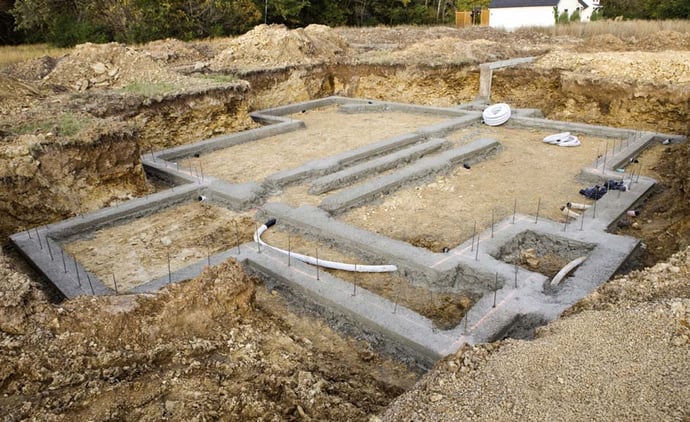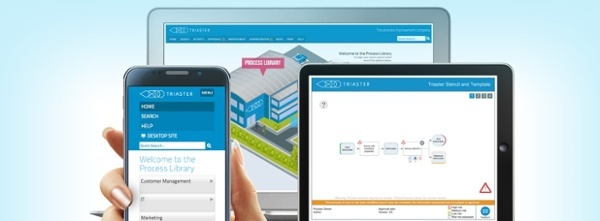You might have a process improvement project plan that's failing, or possibly just want to learn how to make sure it never fails; either way, in this article we identify why process improvement projects fail and what you might be getting wrong with your planning and implementation.
Our current business climate is too reliant on ‘box ticking’, that's one of the takeaway messages from the new white paper detailing how to achieve 
This is one of the core reasons professionals on the process improvement tightrope fail time and time again to see any real improvement - the change is superficial and just because they may have gotten an accreditation/certification...doesn't mean they will see any improvement.
Here are 4 Major Areas Where Process Improvement Project Plans Fall Down
- Box ticking
- Failing to place the improvement project at the heart of your organisation
- Make Your Improvement Approach Fit Your Organisation
- Research, Plan, Execute, Evaluate
'Box Ticking'

Image sourced from: argylltsi.org.uk
The problem with improvement methodologies like Six Sigma and ISO, is that professionals can get caught up with trying to achieve certifications, belts and accreditations. Don't get me wrong, ISO and Six Sigma are great for business improvement, but too many professionals think if they tick all the boxes, then they will have the proverbial keys to the kingdom.
However, if your just ticking the boxes of Six Sigma or dusting off your process manual to achieve ISO certification, then there is really no value in achieving either.
As Oliver Parry outlines in the article Good Governance: Putting the UK Business House In Order: “Regulators seem uninterested in examining the effectiveness of Governance in its present system”.
The problem with ‘box ticking’ is that it leaves behind the human element in favour of targets, systems and processes with very little understanding of the reasons why they're being implemented in the first place - if you're just ticking off the box for the sake of accreditation, what's the likelihood real process/quality improvement is going to stick to your organisation?
Read our recent article: Good Governance: the Quality Debate Continues for more on this.
Failing to Place the Improvement Project at the Heart of Your Organisation

Image sourced from: tourdash.com
I’m amazed at how many organisations decide that they are going to implement a new process improvement approach only to fall at the first hurdle labelled 'COMMITMENT'. How can you measure success or failure if the people responsible for the project haven't placed their project at the forefront of their priorities?
If your team has bought a Business Management software, taken the time to process map and encouraged others to get involved then that's a lot of effort. With that level of effort there is no longer any room for half measures - go all in.
Change is not easy. It requires complete buy-in. If your team has failed to implement improvement after fully prioritising the project then you will just be wasting time, effort and money on an activity that represents zero value to the organisation.
You need to be smarter than that.
Make Your Process Improvement Approach Fit Your Organisation

Image sourced from: homebuilding.co.uk
The point of the process Improvement approach is not to adopt new methodologies, new processes and new ways of thinking just to turn your own business model on its head to adapt. It’s about taking what you already do and making it better - establishing whether certain processes are necessary, adding value to those processes, limiting cost, predicting outcomes, identifying bottlenecks then striving for consistency and effectiveness in your approach.
The ultimate foundation is built on finding and increasing value and getting rid of those activities that don't add value. This is the foundation of operations but in regards to many manic professionals out there in the realm of process improvement, it's being carried out erroneously.
Here’s the golden rule: the right way to approach process improvement is to make it fit your organisation and not the other way around.
- Your process approach needs to be in the ‘constitution’ of your workplace – this is your DNA and it’s focused around customer, quality and ROI (Placed at the heart of your organisation)
- You have a culture and you don’t compromise on your culture – what makes customers pick you over the next guy who offers the same thing? CULTURE and more specifically a culture of excellence that puts the customer first. When a new employee enters the company, this needs to be the first thing they understand (this goes two-fold for management).
- All new knowledge/systems need to be measured against how it fits in with your organisational objectives.

Research, Plan, Execute, Evaluate
This is a process and each part is extremely important and must have complete focus for the improvement project to work...
Research - Find out what the problem is, what software, process, methodology etc. you need to utilise that will turn the problem into an improvement (Tip: Any System process or methodology needs to be easy for the stakeholders to understand and use).
Plan - Before implementing any change, you need to plan exactly how it will happen, what it will look like, when the deadline will be, why it is necessary, who needs to be involved and told, and which areas of the organisation will be affected by the implementation. Make the system fit you, but make your organisation fit the plan!
Execute - The execution should go rather well if you have accounted for 'Research and Plan'. However, this can all fall apart if you don't place your project at the heart of your organisation and get complete buy-in from all stakeholders.
Evaluate - It is always necessary to evaluate any new implementation for the purposes of continual improvement. Is the management system useful, usable and used in your organisation?)
Remember, the customer needs to be at the heart of your process improvement strategy. From improving the quality of the product, to the level of customer service and how well you react to complaints, needs, wants etc…
The next step beyond identifying where improvement projects failed is to identify where they succeeded. The 8 organisations in this case study all had process problems of their own and all embarked on improvement projects that ended up being very successful.
If you are interested in turning your process problems into improvement successes then please download the infographic below...
Related Articles:
Business Improvement: Pros and Cons of a Process ApproachProcess Mapping: Who does it and why?
Mapping business processes: What level should I map to?
Written by Brad Fagan
Brad joined Triaster in 2016 as our Content Marketing Executive hailing all the way from Middle Earth (the film version, not the book) – New Zealand. Brad’s video skills soon resulted in new weekly Triaster videos and his individual touch in some of the Connector and blog articles. In June 2018 Brad moved to Germany with his wife Lynn.

